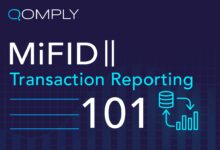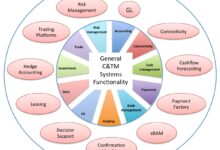Trade finance digitization software for letter of credit processing and document verification: 5 Game-Changing Trade Finance Digitization Software for Letter of Credit Processing and Document Verification
In today’s fast-paced global trade landscape, delays and errors in letter of credit (LC) processing can cost businesses millions. Enter trade finance digitization software for letter of credit processing and document verification—revolutionizing how banks and corporations handle international transactions with speed, accuracy, and security.
1. The Evolution of Trade Finance: From Paper to Digital

For decades, trade finance has relied heavily on paper-based processes. Letters of credit, bills of lading, invoices, and certificates were manually prepared, reviewed, and exchanged—often across continents and time zones. This traditional model, while functional, was fraught with inefficiencies, delays, and fraud risks. The average letter of credit transaction took 5 to 10 days to process, with up to 10 different parties involved and over 20 documents exchanged.
The Paper Problem in Global Trade
The reliance on physical documents created bottlenecks at every stage. Banks had to manually verify the authenticity of each document, often requiring couriers, notarizations, and multiple rounds of corrections. According to the International Chamber of Commerce (ICC), document discrepancies cause up to 70% of LC rejections, leading to costly delays and strained relationships between buyers and sellers.
- Manual data entry increased the risk of human error
- Physical document handling led to shipping delays and loss
- Lack of real-time visibility into transaction status
These challenges were exacerbated during global disruptions like the pandemic, when lockdowns and supply chain breakdowns made paper-based trade nearly impossible to sustain.
The Digital Transformation Imperative
The need for digital transformation in trade finance became undeniable. Financial institutions, corporates, and regulators began pushing for solutions that could automate workflows, reduce processing times, and enhance transparency. This shift was accelerated by advancements in blockchain, artificial intelligence (AI), and cloud computing—all converging to create the foundation for modern trade finance digitization software for letter of credit processing and document verification.
Initiatives like the Digital Trade Chain (DTC) and we.trade, backed by major European banks, demonstrated the feasibility of end-to-end digital trade platforms. These systems allowed buyers, sellers, and banks to collaborate on a shared digital ledger, reducing processing time from days to hours.
trade finance digitization software for letter of credit processing and document verification – Trade finance digitization software for letter of credit processing and document verification menjadi aspek penting yang dibahas di sini.
“The future of trade finance is not just digital—it’s automated, interconnected, and intelligent.” — Global Trade Review, 2023
2. Key Features of Trade Finance Digitization Software for Letter of Credit Processing and Document Verification
Modern trade finance digitization software for letter of credit processing and document verification is designed to address the core pain points of traditional trade: inefficiency, inaccuracy, and lack of transparency. These platforms integrate advanced technologies to streamline every step of the LC lifecycle—from application to payment.
Automated Document Processing and AI-Powered Verification
One of the most transformative features is automated document processing. Using optical character recognition (OCR) and natural language processing (NLP), these systems can extract data from invoices, packing lists, and bills of lading in seconds. AI algorithms then cross-check the data against LC terms to detect discrepancies.
For example, if an invoice shows a shipment date that doesn’t comply with the LC’s terms, the system flags it immediately. This reduces the risk of rejection and allows for faster corrections. Platforms like TradeWeb and essDOX have pioneered AI-driven document verification, cutting verification time by up to 90%.
- OCR extracts text from scanned documents
- NLP interprets context and meaning
- AI compares data against LC clauses for compliance
Real-Time Collaboration and Workflow Management
Digital platforms enable all parties—importers, exporters, issuing banks, advising banks, and freight forwarders—to collaborate in real time. Instead of emailing PDFs or mailing hard copies, users upload documents to a secure portal where they can be reviewed, approved, or rejected instantly.
Workflow engines automate approval chains, sending notifications when action is required. This eliminates the “black hole” effect where documents disappear into email inboxes or physical filing cabinets. The result? Faster turnaround times and improved accountability.
For instance, a platform like BankChain allows banks to assign tasks, track progress, and audit every step of the LC process digitally.
trade finance digitization software for letter of credit processing and document verification – Trade finance digitization software for letter of credit processing and document verification menjadi aspek penting yang dibahas di sini.
Blockchain Integration for Trust and Immutability
Blockchain technology is increasingly being integrated into trade finance digitization software for letter of credit processing and document verification. By creating a decentralized, tamper-proof ledger, blockchain ensures that all transaction data is transparent, secure, and verifiable.
When a document is uploaded, it’s hashed and recorded on the blockchain. Any subsequent changes are logged, creating a full audit trail. This prevents fraud and double financing—a common issue in paper-based systems where the same bill of lading could be used for multiple LCs.
The Contour network, built on R3’s Corda blockchain, connects over 40 banks and corporates globally, enabling fully digital LC transactions. In one pilot, HSBC and Standard Chartered processed a $10 million LC in under 24 hours using Contour—compared to the usual 5–10 days.
3. Top 5 Trade Finance Digitization Software Platforms in 2024
As demand for digital trade solutions grows, several platforms have emerged as leaders in the space. These systems combine automation, AI, and blockchain to deliver robust trade finance digitization software for letter of credit processing and document verification.
1. essDOX by essDOX GmbH
essDOX is a cloud-based platform specializing in document automation and compliance for trade finance. It uses AI to validate documents against LC terms and integrates with SWIFT, ERP systems, and customs databases.
- Supports over 40 document types
- Reduces document review time by 80%
- Used by Deutsche Bank, UniCredit, and ING
Its strength lies in its ability to handle complex regulatory requirements across jurisdictions, making it ideal for multinational corporations.
trade finance digitization software for letter of credit processing and document verification – Trade finance digitization software for letter of credit processing and document verification menjadi aspek penting yang dibahas di sini.
2. Contour (formerly we.trade)
Contour is a blockchain-powered network that digitizes the entire LC process. Built on R3’s Corda platform, it connects banks, corporates, and logistics providers on a single, secure network.
- End-to-end digital LC processing
- Real-time status tracking
- Reduces processing time from days to hours
Contour has processed over $1 billion in trade volume and continues to expand its global footprint. Its open architecture allows new participants to join easily, fostering network effects.
3. TradeSun by TradeSun Technologies
TradeSun offers a modular platform for trade finance automation, including LC issuance, document examination, and payment processing. Its AI engine, DocuMind, learns from historical data to improve accuracy over time.
- Machine learning for adaptive document checking
- Integration with SAP, Oracle, and Microsoft Dynamics
- Multi-language and multi-currency support
TradeSun is particularly popular among mid-sized banks looking to modernize without overhauling legacy systems.
4. Bolero International
Bolero has been a pioneer in electronic bills of lading (eBLs) and digital trade for over two decades. Its RuleNet platform provides a secure environment for issuing, transferring, and verifying electronic trade documents.
- Trusted by Maersk, CMA CGM, and major insurers
- Compliant with eUCP and URC 522
- Supports both blockchain and non-blockchain workflows
Bolero’s long-standing reputation and deep integration with shipping lines make it a top choice for companies moving physical goods.
trade finance digitization software for letter of credit processing and document verification – Trade finance digitization software for letter of credit processing and document verification menjadi aspek penting yang dibahas di sini.
5. Trade Finance Distributors (TFD) by Surecomp
Surecomp’s TFD platform is one of the most widely used trade finance digitization software for letter of credit processing and document verification. It supports over 12,000 banks and corporates in 150 countries.
- Cloud-native architecture for scalability
- AI-powered discrepancy detection
- Seamless integration with SWIFT and local clearing systems
TFD’s global reach and regulatory compliance make it a go-to solution for large financial institutions.
4. Benefits of Implementing Trade Finance Digitization Software
Adopting trade finance digitization software for letter of credit processing and document verification offers a wide range of benefits for all stakeholders in the trade ecosystem.
Reduced Processing Time and Costs
Digital platforms eliminate the need for physical document handling, courier services, and manual data entry. What once took 5–10 days can now be completed in under 24 hours. This speed translates into lower operational costs and improved cash flow.
A study by McKinsey found that digitizing trade finance processes can reduce transaction costs by 50–80%. For a bank processing thousands of LCs annually, this represents millions in savings.
Enhanced Accuracy and Compliance
AI-powered verification reduces human error and ensures compliance with international standards like UCP 600, eUCP, and ISBP. Automated checks flag discrepancies in real time, allowing for immediate correction before submission.
trade finance digitization software for letter of credit processing and document verification – Trade finance digitization software for letter of credit processing and document verification menjadi aspek penting yang dibahas di sini.
This not only reduces rejection rates but also strengthens relationships with clients who value reliability and speed.
Improved Risk Management and Fraud Prevention
Digital platforms provide a transparent audit trail and secure document storage. Blockchain integration further enhances security by making records immutable and verifiable.
Features like digital signatures, multi-factor authentication, and role-based access control ensure that only authorized parties can view or modify documents.
In 2023, a major European bank reported a 60% reduction in fraud attempts after implementing a digital trade finance platform.
5. Challenges and Barriers to Adoption
Despite the clear advantages, the adoption of trade finance digitization software for letter of credit processing and document verification is not without challenges.
Legacy System Integration
Many banks still rely on outdated core banking systems that are not designed for digital workflows. Integrating modern software with these legacy platforms requires significant investment and technical expertise.
trade finance digitization software for letter of credit processing and document verification – Trade finance digitization software for letter of credit processing and document verification menjadi aspek penting yang dibahas di sini.
Some institutions opt for middleware solutions or APIs to bridge the gap, but this can lead to data silos and increased complexity.
Regulatory and Legal Hurdles
While digital documents are legally recognized in many jurisdictions, acceptance varies. Some countries still require wet signatures or physical originals for certain trade documents.
Initiatives like the UNCITRAL Model Law on Electronic Transferable Records (MLETR) aim to harmonize legal frameworks, but adoption is slow. As of 2024, only 20 countries have enacted MLETR-compliant legislation.
Industry Fragmentation and Network Effects
For digital trade platforms to be effective, all parties in a transaction must be on the same network. If a bank uses Contour but the exporter’s bank is not a member, the transaction cannot be fully digital.
This fragmentation limits the scalability of individual platforms. However, interoperability efforts like the Digital Container Shipping Association (DCSA) and the ICC’s Digital Standards Initiative (DSI) are working to create common standards.
6. The Role of AI and Machine Learning in Document Verification
Artificial intelligence is at the heart of modern trade finance digitization software for letter of credit processing and document verification. Unlike rule-based systems, AI can learn from experience and adapt to new patterns.
trade finance digitization software for letter of credit processing and document verification – Trade finance digitization software for letter of credit processing and document verification menjadi aspek penting yang dibahas di sini.
Training AI Models on Historical Data
AI systems are trained on thousands of past LC transactions, learning to recognize common document formats, clauses, and discrepancies. Over time, they become more accurate and efficient.
For example, an AI model might learn that a certain type of invoice from a specific country often contains incorrect HS codes. It can then proactively flag such issues in future transactions.
Natural Language Processing for Clause Interpretation
NLP allows AI to understand the meaning of LC clauses, not just match keywords. This is crucial for complex terms like “shipment must occur within 15 days after the issuance of the inspection certificate.”
Platforms like komgo use NLP to interpret such clauses and verify compliance across multiple documents.
Predictive Analytics for Risk Assessment
Advanced systems use predictive analytics to assess the risk of a transaction. By analyzing historical data, market trends, and counterparty behavior, they can flag high-risk LCs for additional scrutiny.
This helps banks manage credit risk and comply with anti-money laundering (AML) regulations more effectively.
trade finance digitization software for letter of credit processing and document verification – Trade finance digitization software for letter of credit processing and document verification menjadi aspek penting yang dibahas di sini.
7. Future Trends in Trade Finance Digitization
The evolution of trade finance digitization software for letter of credit processing and document verification is far from over. Several emerging trends are shaping the next generation of digital trade.
Interoperability Between Platforms
As the number of digital trade platforms grows, the need for interoperability becomes critical. Initiatives like the ICC’s DSI and the World Bank’s Digital Trade Standards are working to create universal data formats and APIs.
In the future, a bank on Contour may seamlessly exchange documents with a partner on Bolero, creating a truly interconnected trade ecosystem.
Integration with Supply Chain Finance
Trade finance is increasingly being integrated with supply chain finance platforms. This allows suppliers to receive early payment based on approved LCs, improving working capital across the supply chain.
Platforms like TradeFinanceTech are leading this convergence, offering end-to-end solutions from order to payment.
Central Bank Digital Currencies (CBDCs) and Smart Contracts
The rise of CBDCs could revolutionize trade finance by enabling instant, secure cross-border payments. When combined with smart contracts on blockchain, LCs could be automatically executed upon fulfillment of conditions—such as GPS-confirmed delivery.
trade finance digitization software for letter of credit processing and document verification – Trade finance digitization software for letter of credit processing and document verification menjadi aspek penting yang dibahas di sini.
Pilots by the People’s Bank of China and the Monetary Authority of Singapore are already exploring this possibility.
What is trade finance digitization software?
Trade finance digitization software refers to digital platforms that automate and streamline trade finance processes, such as letter of credit issuance, document verification, and payment settlement. These systems use technologies like AI, blockchain, and cloud computing to improve efficiency, accuracy, and security in international trade.
How does AI improve document verification in LC processing?
AI improves document verification by using optical character recognition (OCR) to extract data and natural language processing (NLP) to interpret LC clauses. Machine learning models learn from historical transactions to detect discrepancies, reduce errors, and ensure compliance with international standards.
Is blockchain necessary for digital trade finance?
trade finance digitization software for letter of credit processing and document verification – Trade finance digitization software for letter of credit processing and document verification menjadi aspek penting yang dibahas di sini.
While not strictly necessary, blockchain enhances trust, transparency, and security in digital trade finance. It provides an immutable ledger for recording transactions and prevents fraud like double financing. However, many effective platforms operate without blockchain using secure cloud architectures.
What are the main challenges in adopting digital LC platforms?
Key challenges include integrating with legacy banking systems, navigating varying legal frameworks for electronic documents, and achieving network effects where all parties in a transaction are on the same platform. Regulatory harmonization and industry collaboration are essential to overcome these barriers.
Which industries benefit most from trade finance digitization?
Industries with complex international supply chains—such as manufacturing, automotive, pharmaceuticals, and agribusiness—benefit the most. These sectors rely heavily on letters of credit and face significant delays and costs from paper-based processes.
The adoption of trade finance digitization software for letter of credit processing and document verification is transforming global trade. By automating workflows, enhancing accuracy, and improving security, these platforms are making international transactions faster, cheaper, and more reliable. While challenges remain, the momentum toward digitalization is unstoppable. As interoperability improves and new technologies like AI and CBDCs mature, the future of trade finance is not just digital—it’s intelligent, interconnected, and inclusive.
trade finance digitization software for letter of credit processing and document verification – Trade finance digitization software for letter of credit processing and document verification menjadi aspek penting yang dibahas di sini.
Further Reading:



